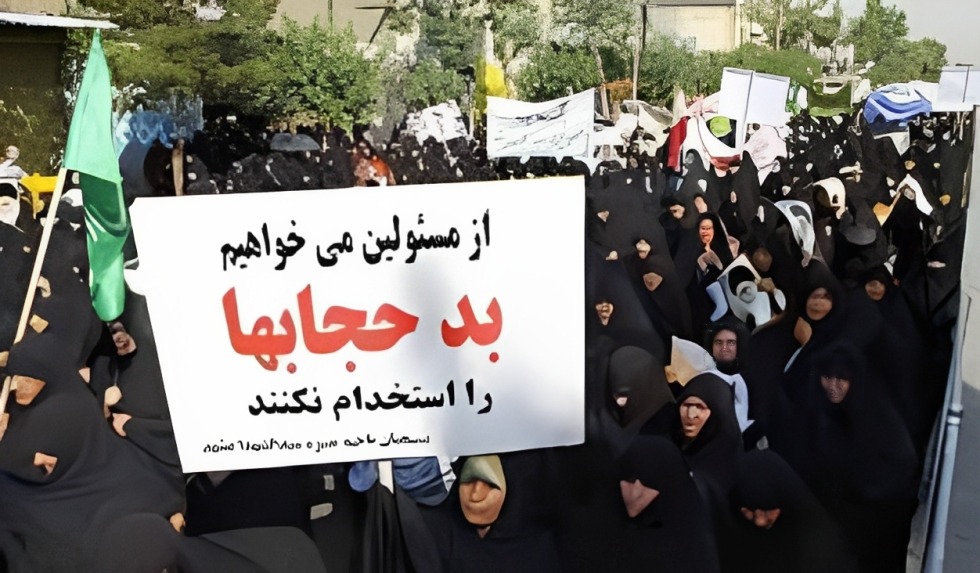Since the victory of the Iranian Revolution in 1979, the issue of Islamizing society has been the main concern of Iranian governance. It has always been prioritized over employment, poverty eradication, addiction, or any other issue or problem.
According to official statistics, there are currently over five million unemployed people in Iran, and the Parliament has only allocated four thousand billion tomans for job creation, with which 57,000 jobs can be created. Assuming the unemployed population in Iran to be 2.5 million people, the government can only solve the problem for 2.28 percent of the unemployed. Meanwhile, according to statistics taken in 2012, the poverty line in rural communities was 30 percent, and in urban communities, it was 40 percent.
In the area of addiction, according to the statistics provided, around 1.3 million addicts have been identified in Iran, of which about 45 percent are under the age of 29, and 63 percent are married. Despite this situation, the budget that the Iranian government spends in the field of cultural promotion and Islamic propagation is more than seven times the budget allocated to solve the unemployment issue. The matters of poverty eradication and combating addiction are also given this level of disregard.
Mohammad Ali Jafari, the Commander-in-Chief of Iran’s Revolutionary Guards, stated on the 20th of Esfand last year in a meeting of the Assembly of Experts, referring to the words of Ali Khamenei, the Leader of the Islamic Republic, that Islamizing society is one of the goals of the Islamic Revolution, and we must strive to achieve it. This requires the continuous effort of all people and officials of the system.
However, the Iranian government has always sought to establish and create an Islamic society, and the officials of the Islamic Republic consider the establishment of an Islamic society, as existed at the beginning of Islam, as one of the main goals of the revolution. In this way, the government has spent heavily on advertising to reach this goal and spread ‘Pure Mohammadan Islam’ and establish ‘Ali’s Just Rule’ throughout the world, and these expenditures and spending continue to this day.
Comparing the budget of different sectors in Iran, one can conclude that the Iranian government has put all its advertising power towards promoting and spreading Islam, and the budget allocated to institutions and organizations related to subjects such as religious and Quranic education, enjoining good and forbidding wrong, chastity and hijab, and other similar topics is much greater than the expenses for issues like addiction, employment, poverty eradication, etc., that are among the main and essential concerns of the people in society.
Sadegh Zibakalam, a sociologist and critic of these policies, claimed in one of his recent debates with Hossein Allahkaram that “the annual budget for cultural and promotional affairs amounts to over 30,000 billion rials, and this budget is five times the budget of the Ministry of Culture and Islamic Guidance. Every rial spent by the Ministry of Culture and Islamic Guidance and its subsidiaries is accounted for and answerable to supervisory bodies, including the parliament, while many cultural and advertising institutions are not obligated to answer or account for their expenditures and expenses to any organization or agency.”
The issue of Islamic cultural building and the effort to form and achieve an Islamic society is also a tool for forces aligned with the regime, enabling them to dominate society with their ideologies in the name of promoting Islam and religion. Likewise, in the name of Islamic cultural building, chastity and hijab, the expansion of Islam, religious teachings in society, etc., they receive substantial funds without accounting to the country’s financial institutions.
On the other hand, in the name of enjoining good and forbidding wrong, they launch guidance patrols or Amir al-Mu’minin plans to create a climate of fear and terror in society.
These issues have become an excuse for extremist groups like Ansar Hezbollah inside Iran, supported by the regime, to take any action in the name of Islam with governmental backing, and even the judiciary may lack the power to prosecute them.
Following the acid-throwing incident in Isfahan and the attack on Ali Motahari, an Iranian parliament representative in Shiraz, Ansar Hezbollah once again issued a statement saying, “In the event of women’s entry into stadiums on the 29th of Khordad of this year, they will deal with this matter decisively.”
In part of this statement, Ansar Hezbollah stated: “Until the 29th of Khordad, the day when, according to the vice president for women and family affairs, the government will take its first step in admitting women to stadiums, there are about 40 days left. It’s an opportunity for officials to retract this wrong path, or else they will witness another historic day in the calendar of Hezbollah.” This highlights the challenges and tension that continue to exist around certain social and cultural issues in Iran, and how groups like Ansar Hezbollah can use religious principles to assert their power and control over certain aspects of public life.
Islamic Society, At Any Cost
It seems that extremist groups within the Iranian government are determined to achieve their vision of an Islamic society at any cost. They are prepared to take any possible and impossible action to reach this goal and bear the expenses for it.
This mindset among the rulers of the Islamic Republic has led to neglecting the society’s primary concerns, such as poverty, unemployment, job creation, and addiction, while the root of many crimes and delinquencies in society lies in the government’s neglect of these areas. Based on this, the Islamization of society is considered a red line for the regime, to the extent that social abnormalities appear insignificant or of little importance compared to it.
However, national and military officials in Iran often attribute societal disorders to improper veiling and the lack of a society founded on Islamic values. The reason why the regime prioritizes the promotion and expansion of Islam, even at the lowest educational levels, can be attributed to the existence of such viewpoints within the government. This approach may continue to foster division and tension within society, especially if it leads to neglecting other critical areas that affect people’s everyday lives.
Many government clerics in Iran strive to present issues such as hijab as far more than a simple religious and Islamic matter, obliging citizens in various ways to follow religious commands.
In this context, one of the topics that is always promoted in the path of Islamizing society is the “chador” as the “highest Islamic dress.” This has brought significant profit to the mafia in this area. Importation of black chador fabric is monopolized by those close to the ruling elite, and Iran’s leader has repeatedly regarded the chador as the superior form of hijab in his speeches. Jamshid Basiri, the former secretary of the Iran Textile Association, has claimed that the value of imported black chador fabric in the country in 2012 was $17 million, sold for $170 million.
Although the Iranian government is a religious one, religion has become a tool to achieve social, economic, political, and other goals. This situation has created an environment where significant profits in the name of expanding and building an Islamic society have been reaped by those close to the government and its contractors. If the government genuinely cared about cultural development, reducing corruption, and crimes, it could have spent these resources in areas such as job creation, poverty eradication, and combating addiction, placing society in a more desirable state.










